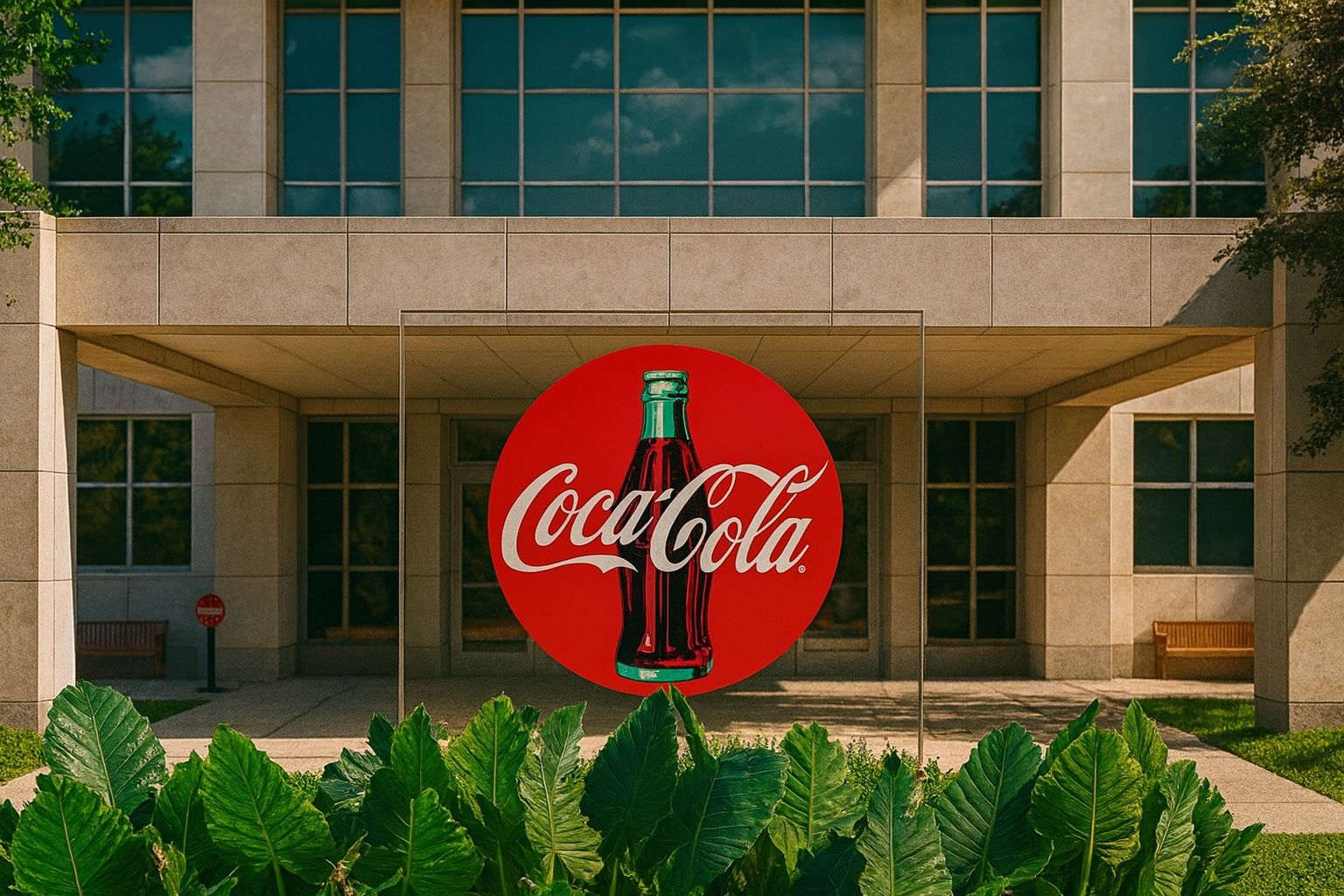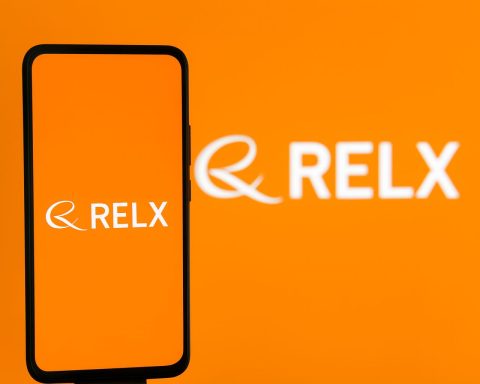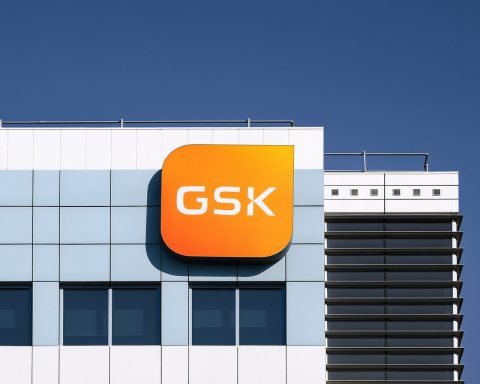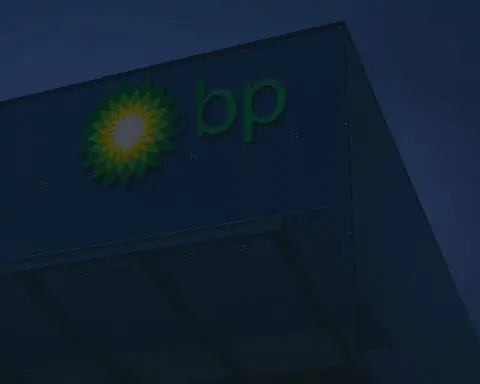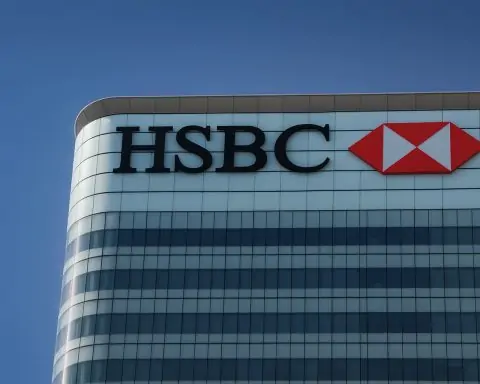- Price & Valuation: As of Oct 10, 2025, KO closed around $67.0 (market cap ~$288.6B) [1] [2]. It trades at a trailing P/E ~23.8x (forward ~22.5x) [3] [4], roughly in line with peers.
- Recent Performance: The stock has been relatively flat recently – roughly +0.6% over the past week and –1.2%over the last month [5]. It’s up about +8.4% year-to-date (and +55.9% over 5 years), though it has slightly lagged the S&P 500 in 2025 [6].
- Dividend: Coca-Cola is a Dividend King (raising payouts for over 60 years). It recently approved a quarterly dividend of $0.51 (≈$2.04/year), yielding about 3.0% [7]. The payout ratio (~72%) and long history of increases underscore KO’s focus on steady income.
- Analysts & Targets: Wall Street consensus remains a “Buy”. The average 12-month price target is around $76.9, implying roughly +15% upside [8] [9]. Most brokers (UBS, RBC, JP Morgan, etc.) have “Outperform/Buy” ratings and targets in the mid-$70s to $80s [10] [11].
- Recent News: In early Oct 2025, Coca-Cola announced it will roll out 7.5‑oz mini cans (priced ~$1.29) and introduce a cane-sugar sweetened Coke in the U.S., aiming to attract budget‑ and calorie-conscious shoppers [12] [13]. These moves respond to “choppy” soda demand (sales gains have come from price hikes, not volume [14]). Notably, in June 2025 Turkey’s antitrust authority launched a probe into Coke’s sales practices [15], a regulatory risk to watch.
- Company Snapshot: Coca-Cola is the world’s largest soft-drink company, operating in 200+ countries with over 30 brands each generating more than $1 billion in sales [16]. Its portfolio ranges from flagship sodas (Coke, Diet Coke, Sprite, Fanta) to waters and juices. For example, KO holds a 19% stake in Monster Beverage (leading energy drinks) [17] and has expanded into new categories (like protein drinks and sparkling waters). The image below shows a Coke delivery truck in Los Angeles – a glimpse of its vast distribution network worldwide:
Figure: A Coca-Cola distribution truck in downtown Los Angeles (2018). The company’s products are delivered globally.
Coke sells roughly 2 billion servings per day (over 700 million ounces) worldwide. It is a Dow-30 component and one of the largest non-alcoholic beverage companies. In emerging markets, KO often drives growth (e.g. Coca-Cola and local brands like Thums Up achieved double-digit volume growth in India [18]).
Figure: Coca-Cola products (Coke, Sprite, etc.) on the shelf of a Sarajevo supermarket (Bosnia, 2024). The brand’s retail presence spans countless stores globally.
- Earnings & Fundamentals: In Q1 2025 (ended Mar), Coke delivered organic revenue +6% and EPS +5% ($0.77), despite a 2% FX drag on net sales [19] [20]. For Q4 2024, revenue was $11.40 B (+4.2% vs. consensus –2.5%) and EPS $0.55 [21]. Management reaffirmed long-term targets (5–6% organic growth) and said its “all-weather strategy” helped navigate the weak demand environment [22] [23]. However, growth is largely coming from pricing; U.S. volumes are sluggish (Reuters notes Coke’s U.S. sales gains have been driven by higher prices, not more cases sold [24]). Currency headwinds remain a factor: strong USD trimmed $0.2B from Q1 revenue. (Coke expects inflation to moderate eventually, but warned consumers are feeling pressure [25].)
- Technical Outlook: From a chart perspective, KO is in a tight trading range. ChartMill notes KO has been stuck between about $65–$67 for weeks [26]. The stock closed just below key moving averages (50-day ≈$68.1 and 200-day ≈$69.9 [27]). ChartMill gives KO a very low technical rating (1/10), calling it a “bad performer” with negative medium- and short-term trends [28]. Immediate resistance lies around $68.0–$68.5, with support near $66.4 [29]. The RSI is around 30–35 (neutral to slightly oversold [30]). In summary, technical signals are mixed/bearish: KO needs to clear $68 to regain momentum, otherwise a break below $66–$65 could trigger further dips.
- Analyst Commentary: Experts emphasize Coke’s stability. Truist analyst Bill Chappell says “Coca-Cola looks like one of the safest plays in what has become a minefield of challenges” (citing issues like tariffs, FX, and consumer health trends) [31]. Brian Mulberry of Zacks adds that Coke’s “diverse offerings have proven buoyant in the face of consumers cutting back on sugary drinks,” underpinning long-term demand [32]. MarketBeat notes that even after a 6% post-earnings dip (due to a big cash outlay), KO’s fundamentals are intact: it still trades at a premium P/E vs. PepsiCo (22.5× vs 17.1×) because of its unmatched global footprint [33]. Wall Street’s consensus target (~$77) assumes steady growth ahead [34]. Importantly, analysts highlight KO’s dependable dividend (yield ~3.1% [35]) as a cushion for income-focused investors.
- Business Developments: Coca-Cola continues innovating. Under CEO James Quincey it has added new brands (e.g. Topo Chico water, Fairlife dairy, and a recent venture capital stake in the Celsius energy drink brand). Last year it launched Simply Pop (a prebiotic soda) and expanded ready-to-drink teas [36], targeting health-conscious consumers. On the flip side, it faces regulatory scrutiny: besides the Turkey probe [37], the company is watching shifts like soda taxes and labeling lawsuits. Coca-Cola also announced aggressive capital returns – for example, a new $6 billion share buyback program through 2030 (not yet completed) – highlighting its commitment to shareholders.
- Macroeconomic Impact: Broader trends could sway KO stock. High inflation and interest rates have stressed U.S. consumers [38], potentially limiting soda purchases. Moreover, some analysts warn of an “Ozempic effect” – weight-loss drugs curbing junk-food and soda demand (PepsiCo’s CFO noted he’s monitoring this trend [39]). Trade/tariff news has also spooked markets: for instance, on Oct 10 global stocks tumbled (U.S. indices down ~2–3%) amid fears of a U.S.–China tariff escalation [40]. In such volatile times, KO’s low beta (0.43) and steady dividends make it a defensive favorite. Conversely, any easing of rates or inflation could boost consumer spending – Motley Fool notes that KO, a Dividend King, “could do even better if economic growth takes off” [41]. All told, macro factors (policy, inflation, consumer habits) are a double-edged sword: they pose risks to Coke’s pricing power and volume, but also reinforce its status as a reliable, income-oriented stock.
Sources: Authoritative analyses and news (Reuters, MarketBeat, SimplyWallSt, TS2.Tech, Motley Fool, etc.) have been used throughout this report to provide quotes and data [42] [43] [44] [45] [46] [47] [48]. Each cited figure is drawn from these linked sources for accuracy.
References
1. stockanalysis.com, 2. www.marketbeat.com, 3. www.marketbeat.com, 4. www.marketbeat.com, 5. simplywall.st, 6. simplywall.st, 7. www.marketbeat.com, 8. www.marketbeat.com, 9. www.marketbeat.com, 10. www.marketbeat.com, 11. www.marketbeat.com, 12. www.reuters.com, 13. www.reuters.com, 14. www.reuters.com, 15. www.reuters.com, 16. investors.coca-colacompany.com, 17. www.reuters.com, 18. investors.coca-colacompany.com, 19. investors.coca-colacompany.com, 20. investors.coca-colacompany.com, 21. www.reuters.com, 22. investors.coca-colacompany.com, 23. www.reuters.com, 24. www.reuters.com, 25. www.reuters.com, 26. www.chartmill.com, 27. www.marketbeat.com, 28. www.chartmill.com, 29. www.chartmill.com, 30. www.chartmill.com, 31. www.reuters.com, 32. www.reuters.com, 33. www.marketbeat.com, 34. www.marketbeat.com, 35. www.marketbeat.com, 36. investors.coca-colacompany.com, 37. www.reuters.com, 38. www.reuters.com, 39. ts2.tech, 40. ts2.tech, 41. www.nasdaq.com, 42. www.reuters.com, 43. www.reuters.com, 44. simplywall.st, 45. www.reuters.com, 46. www.marketbeat.com, 47. ts2.tech, 48. www.reuters.com
